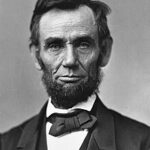The Pacific Railway Act of 1862
President Abraham Lincoln signed the Pacific Railway Act on July 1, 1862, during the Civil War’s darkest period. This legislation authorized construction of America’s first transcontinental railroad connecting the Atlantic and Pacific coasts. The act granted the Union Pacific and Central Pacific railroads massive federal subsidies and land grants totaling millions of acres. 📊 The government provided $16,000 to $48,000 per mile in bonds depending on terrain difficulty.
Strategic Wartime Decision
Lincoln viewed the transcontinental railroad as essential for national unity and security. The project would bind California firmly to the Union during the Civil War crisis. It promised to revolutionize commerce, communication, and military transport across the continent. The legislation demonstrated Lincoln’s vision of American industrial supremacy and westward expansion. 💰 Private companies received unprecedented government backing to complete this ambitious infrastructure project.
Engineering Marvel Authorization
The Pacific Railway Act authorized one of history’s greatest engineering challenges. Workers would blast through the Sierra Nevada mountains and cross vast western plains. The project required importing thousands of Chinese and Irish laborers to complete the monumental task.
Impact:
Economic Transformation
The transcontinental railroad fundamentally transformed American commerce and industry after its 1869 completion. Cross-continental travel time dropped from six months to one week, revolutionizing trade patterns. 💰 The railroad opened western markets to eastern manufacturers while bringing western resources to industrial centers. Mining, agriculture, and cattle ranching expanded dramatically across the frontier territories.
National Unification
Lincoln’s railroad authorization created the physical infrastructure binding America together as one nation. The project demonstrated federal power to undertake massive public works during national crisis. It strengthened ties between California and eastern states, preventing potential Pacific coast secession. The railroad became a symbol of American technological achievement and manifest destiny ideology. 🌍 International observers marveled at America’s engineering capabilities and industrial ambition.
Westward Expansion Acceleration
The transcontinental railroad accelerated westward migration and territorial development beyond all expectations. New towns and cities sprouted along the railway route, creating economic opportunities for thousands. However, construction devastated Native American communities and traditional ways of life. ⚠️ The project’s environmental and social costs included massive buffalo herd destruction and tribal land displacement. Despite these consequences, the railroad established America as a continental power and industrial giant.
